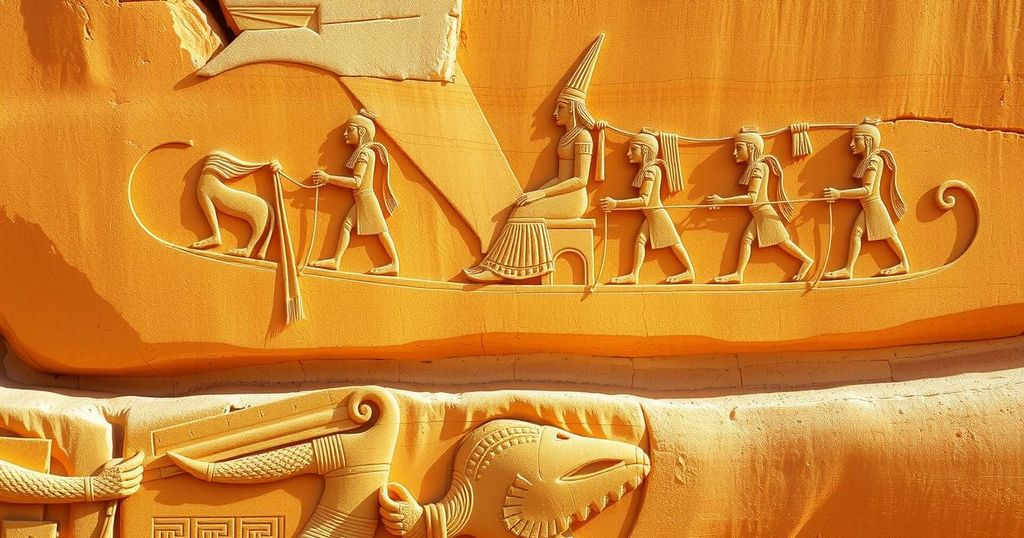Archaeology Breakthrough As Rare Rock Carving Reveals Key Secrets About Ancient Egyptian Kings

- Archaeologists found a rare rock carving in southern Egypt.
- The carving dates back to the fourth millennium BC, predating pyramids.
- It represents a figure from the First Dynasty of ancient Egypt.
- The figure is shown on a boat being pulled by five individuals.
- This discovery provides greater insight into early Egyptian rulers.
Groundbreaking Discovery Near Aswan Could Change Perspectives
Archaeologists have made headlines with a groundbreaking find in southern Egypt. This remarkable discovery of a rare rock carving near Aswan could radically transform the way scholars understand the ancient rulers of northern Africa. Dating back to the fourth millennium BC, this ancient etching is particularly significant as it predates the first pyramids by several centuries, offering a glimpse into a time long before Egypt’s iconic monuments were built.
Ancient Carving Sheds Light on Early Egyptian Rulers
The well-preserved carving showcases a seated figure adorned with distinctive features typical of early Egyptian kings. Archaeologists noted the prominent long, pointed false beard, a hallmark of pharaonic representation. Research published in the journal Antiquities indicates that this figure represents a member of the political and military elite during the First Dynasty period. This era is crucial in ancient Egyptian history as it witnessed the initial steps toward the political unification of the region, creating a foundation for what would become one of history’s most formidable civilizations.
Unexpected Insights from Ancient Art
In this fascinating artwork, the figure is depicted seated on an ornate boat, being towed by five individuals while another person navigates the vessel with an oar. Crucially, this figure is not identified as Pharaoh Narmer, who is attributed to unifying Egypt circa 3100 BC, leaving the actual identity of this elite warrior a tantalizing mystery. The carving was found beneath rubble in a quarry area, which has been active since at least 330 BC, and it once offered an impressive view over the Nile Valley. The direction the boat is facing—northward—suggests a journey upstream, a detail that intricately links the artwork to the geography and lifestyle of early Egyptians.
In summary, this discovery near Aswan offers invaluable insights into the early political structures and cultural nuances of ancient Egypt. The carving, depicting a figure that likely played a significant role in the unification process, not only marks a historical milestone but also enriches our understanding of Egyptian state formation. As research continues, the significance of this rock art is increasingly recognized as a key component to understanding the dynamics of power in ancient Egypt.







